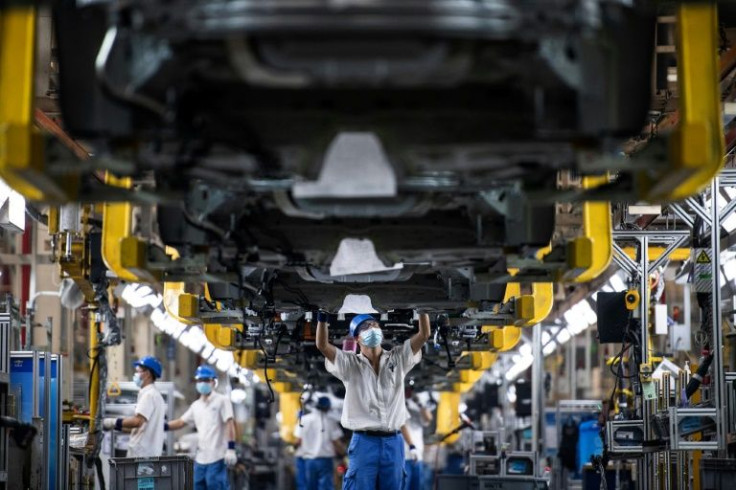China Won't Catch Up With America Anytime Soon
Like Japan, in the 1980s, China's economy won't catch up with the U.S. economy any time soon.
There was a time Japan was closing in on the U.S. economy. That was in the 1980s when the U.S. economy slid into a severe recession, while Japan's economy was growing by leaps and bounds, and Japanese products dominated world markets. Thanks to an export-led industrialization model and imported technology, mainly from the U.S.
Economists and business strategists raved for the "Japanese miracle," seeing it as a model for the emerging market world, including China.
Unfortunately, the miracle didn't last for too long for the Japanese people. Japan's economic growth stalled in the 1990s, lagging behind that of the U.S. for three decades, due to the burst of multiple bubbles, the pilling of debt, and deteriorating demographics—low marriage and birthrates, and the swelling of the population over 60years old.
As a result of the slow growth, Japan's economy never caught up with the U.S.
Today, Japan remains mired in economic stagnation and debt, counting "lost decades" as the U.S economy grows healthy.
The same could be the case for China's economy, as the parallels with Japan are too similar to ignore.
Since opening to the rest of the world in the late 1970s, China's economy has experienced growth rates similar to that of Japan's, thanks again to export-led industrialization and imported U.S. technology. And it's closing into the U.S., as Dr. Tenpao Lee, professor emeritus of economics at Niagara University, describes nicely with numbers. For the 1978-21 period, China's GDP grew from $0.22 trillion to $17.7 trillion, while its per capita GDP grew from a meager $229 to a whopping $12,552. Over the same period, America's GDP rose from $2.35 trillion to $23 trillion, while its per capita GDP rose from $10,565 to $69,288. "Specifically, China's economy was less than 10% of the U.S. economy in 1978 and 77% of the U.S. economy in 2021," he told International Business Times in an email.
Moreover, Professor Lee thinks the Chinese economy may already be larger than the American economy in purchasing power parity (PPP). "As a result, the trend indicated that China might challenge the USA as the world leader in 10 to 20 years," he adds.
Still, China's per capita GDP remains a tiny fraction of that of America's. Meanwhile, its growth is at risk from the burst of multiple bubbles, like the domestic property bubble and the international bubble, fueled by loans to emerging market and frontier economies from Southeast Asia to Africa.
In addition, China's economy is at risk of a "crumbling" population pyramid due to plunging marriage and birthrates caused by the One-child policy and the country's property bubble. It has made it hard for young people to afford to buy a place where they can raise a family.
The plunging marriage and birthrates undermine China's economic growth in several ways. First, it leads to a shrinking labor force, pushing wages higher and making it hard for Chinese products to compete against products from labor-abundant Southeast Asia.
Second, plunging birthrates result in unfavorable "dependency rates" — too few workers who will have to support too many retirees. And that will eventually force Beijing to issue debt to void the gap.
Japan's economy has been under pressure from these problems for three decades. China's economy could be under pressure for many more.
What should America do in the meantime? First, get stronger by addressing its economic problems, too. "We have to be stronger rather than expect China to fail and become another Japan," adds Professor Lee.

© Copyright IBTimes 2024. All rights reserved.












